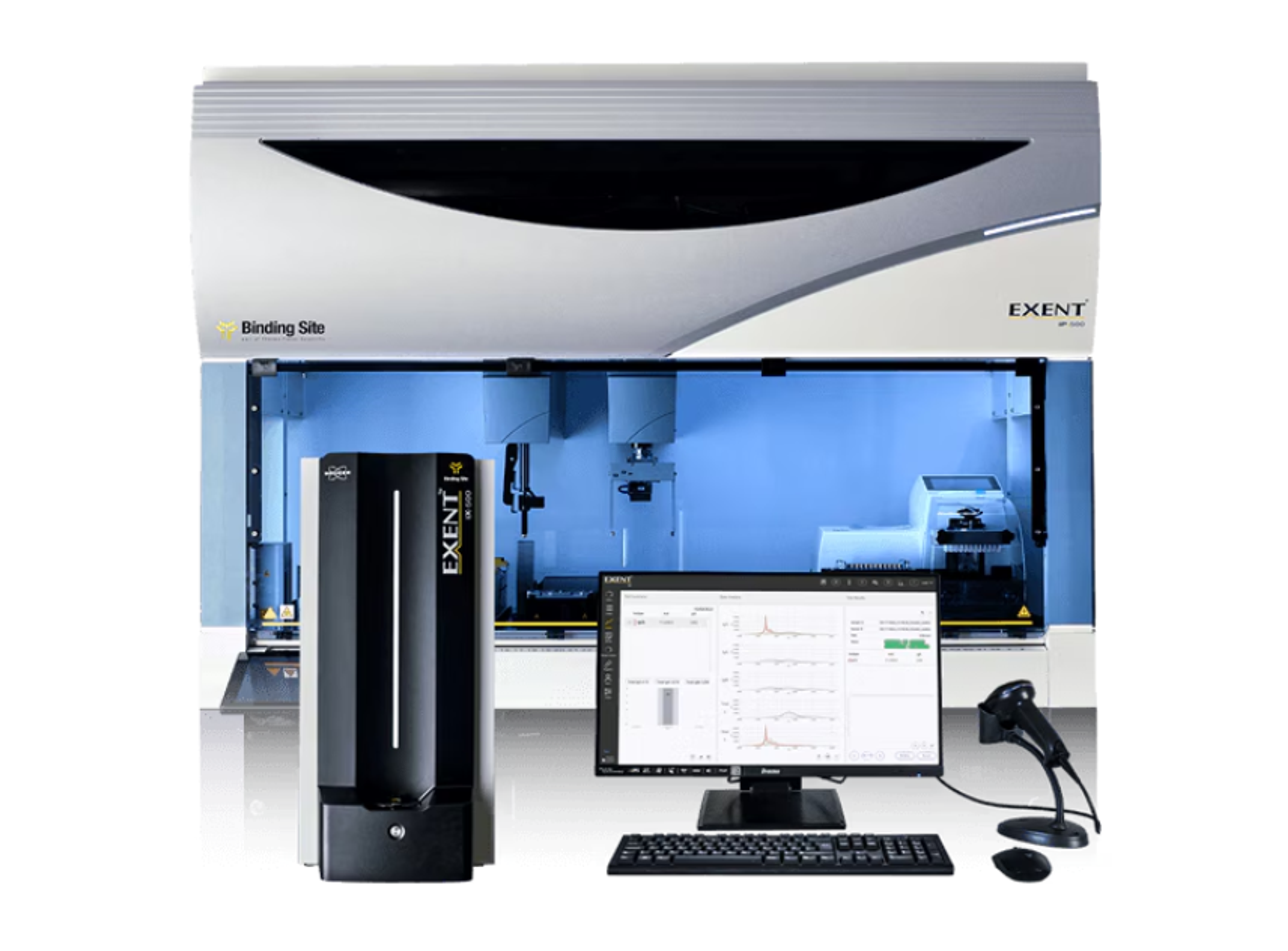Mass spec used as prognosis tool for high-risk smoldering multiple myeloma
Single-point and kinetics of peripheral residual disease by mass spectrometry to predict outcome in patients with high risk smoldering multiple myeloma included in the GEM-CESAR trial
30 Oct 2024Smoldering multiple myeloma (SMM) is an asymptomatic precursor condition to multiple myeloma (MM), a monoclonal gammopathy form of bone cancer affecting plasma cells. For current monitoring, next-generation flow (NGF) cytometry is used by extracting bone marrow to measure levels minimal residual disease (MRD). This is an invasive technique and cannot be performed regularly.

The EXENT® System is an automated solution that enables M-protein identification and measurement in serum.
The Binding Site has investigated an alternative prognosis monitoring technique using quantitative immunoprecipitation mass spectrometry (QIP-MS) to identify a target protein (M-protein) from peripheral blood (PB) in high-risk smoldering multiple myeloma (HRsMM) patients as a diagnostic solution. The GEM-CESAR trial was conducted using 62 HRsMM patients who had undergone treatment and presented peripheral residual disease (PRD). In this trial, a direct comparison of NGF with QIP-MS was performed.
The results obtained from using The Binding Site's MS EXENT® analyzer for QIP-MS have concluded that QIP-MS is clinically valuable for HRsMM monitoring due to its passive technique. In addition, compared to NGF, it gave comparable clinical value and could be used as a gateway progression diagnostic before performing a bone marrow BM aspiration/biopsy for MRD assessment.
Want the latest science news straight to your inbox? Become a SelectScience member for free today>>

